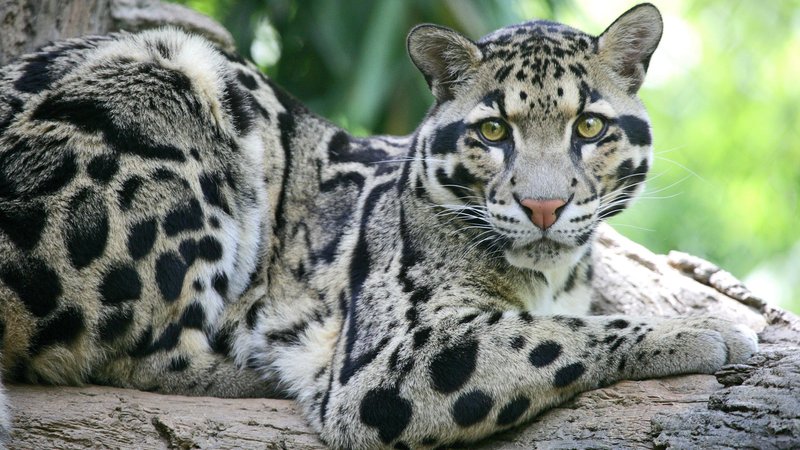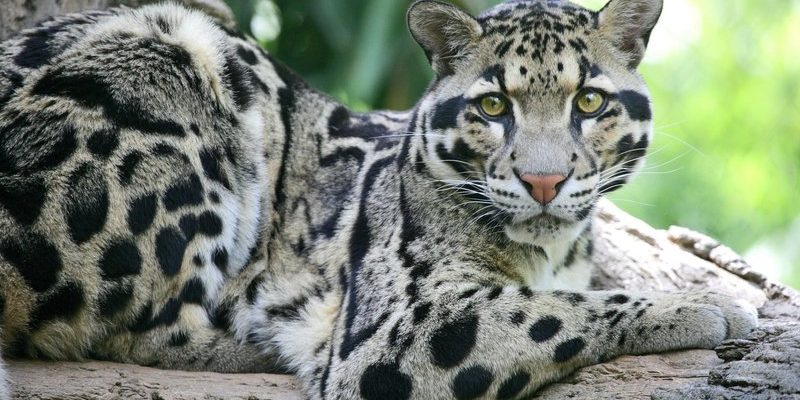
So, what exactly goes into the diet of a clouded leopard? Well, it’s not a simple answer. These cats are opportunistic feeders, meaning they’ll eat whatever is available within their habitat. From small mammals to birds, their diet is as varied as the jungles they inhabit. And when it comes to hunting, their strategies are as clever as they are stealthy. Let’s dive into the world of the clouded leopard and uncover the secrets of their hunting prowess and dietary preferences.
Understanding the Clouded Leopard’s Natural Habitat
Before we break down what clouded leopards eat, it’s essential to understand where they live. These cats are primarily found in Southeast Asia, residing in tropical rainforests, cloud forests, and sometimes even mountains. Their habitat is rich in biodiversity, providing ample food sources and lots of places to hide.
Why is their habitat crucial? Well, the dense foliage of their surroundings allows them to stalk prey effectively. Picture a cozy café where you blend in with the crowd—this is how clouded leopards navigate their environment. They use the trees to their advantage, often hunting from above and using their agility to pounce on unsuspecting animals below. This adaptability to their environment is what makes them such efficient hunters.
The Diet of Clouded Leopards: What Do They Eat?
Clouded leopards are carnivorous, which means their diet consists mainly of meat. But don’t think they are picky eaters. They are known to consume a wide variety of prey, depending on what’s available in their territory. Here’s a quick list of some of their favorite meals:
- Small to medium-sized ungulates (like deer)
- Rodents and rabbits
- Birds
- Monkeys
- Other small mammals
You might be wondering how they choose their meals. Clouded leopards are opportunistic hunters, meaning they will hunt whatever they can find. If a deer is nearby, they may go for that; if no deer are available, they might settle on a tasty rodent instead. Their flexible diet helps them survive in changing environmental conditions, which is crucial for their survival.
Hunting Techniques: Stealth Over Speed
When it comes to hunting, clouded leopards have some unique strategies. Unlike lions who rely on speed, clouded leopards prefer stealth. They are solitary hunters, meaning they usually hunt alone rather than in groups. This allows them to sneak up on prey without drawing attention.
One of their favorite tactics is to use their climbing ability. Just like a ninja, they can scale trees effortlessly, often hiding in branches while they survey their surroundings. This elevation gives them a strategic advantage, allowing them to spot potential meals from a distance.
When they do decide to pounce, clouded leopards rely on their strong forelegs and sharp claws to grab onto their prey. Their powerful jaws and teeth are designed to deliver a swift and lethal bite, ensuring a quick kill. This combination of patience and power sets them apart from many other big cats.
The Role of Their Excellent Vision in Hunting
Have you ever noticed how some animals have amazing eyesight? Well, clouded leopards are no exception. They possess large, forward-facing eyes that provide excellent binocular vision, which is crucial for judging distances when hunting.
In low-light conditions, their vision becomes even more impressive. Their eyes can catch even the faintest glimmer of movement in the dark jungle. This ability allows them to hunt effectively during dawn and dusk, times when many prey animals are also on the move.
Here’s the thing: good vision paired with their stealthy hunting techniques makes clouded leopards incredibly successful predators. They know how to take advantage of their strengths, which is something we all can learn from, right?
Dietary Challenges and Adaptations
Despite their hunting skills, clouded leopards face several challenges when it comes to finding food. Habitat loss due to deforestation is a significant issue that impacts their diets. With fewer trees and animals, these beautiful cats have to adapt or face scarcity.
Another challenge comes from their competition. Other predators in their area, such as larger cats like tigers, can outcompete them for food. Clouded leopards have adapted by becoming more nocturnal, hunting during the night when they have less competition and more opportunities to catch their prey.
They might also rely more on smaller animals when larger prey is scarce. This adaptability is key to their survival, showing how flexible and resourceful they can be in the wild. It’s a reminder of how important it is to protect their habitats so they can continue to thrive.
Conservation and the Future of Clouded Leopards
As we come to understand their diet and hunting strategies, it’s important to highlight the conservation challenges these big cats face. With their habitats shrinking, clouded leopards are classified as vulnerable, meaning their future is at risk.
Efforts are underway to protect their habitat and raise awareness about the importance of preserving these incredible animals. Organizations are working to create protected areas and improve the ecosystems they rely on. It’s critical that we all join in the effort to conserve wildlife and educate others about the importance of every species, including the clouded leopard.
If we don’t make changes now, we may lose these remarkable animals forever. So, supporting conservation initiatives can help ensure that future generations will be able to marvel at the beauty of clouded leopards in the wild.
Final Thoughts
In conclusion, the clouded leopard is a remarkable creature with an impressive diet and fascinating hunting strategies. From their stealthy movements to their adaptability in challenging environments, they exhibit behavior that is both strategic and fascinating. Understanding how they hunt and what they eat not only deepens our appreciation for these big cats but also underscores the importance of conservation efforts to protect them.
It’s clear that their survival is tied to the health of their forest habitats. By working together to support these ecosystems, we can ensure that clouded leopards continue to roam the jungles for generations to come. Next time you think about these beautiful cats, remember their incredible skills—and let’s hope we can keep their legacy alive!

